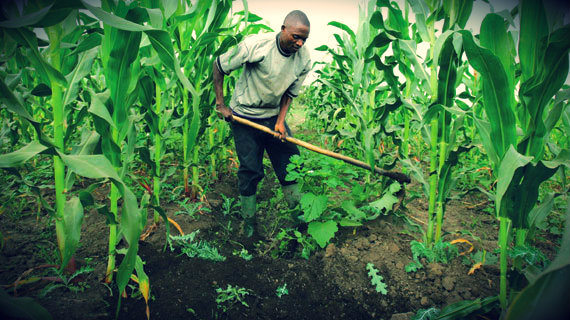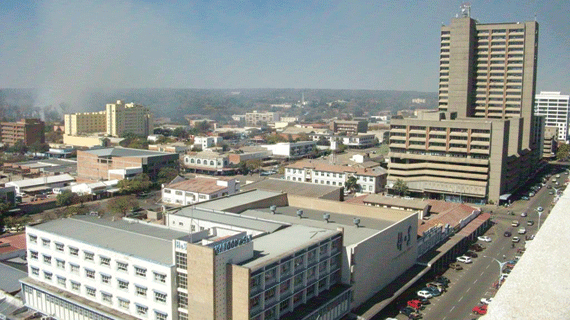
TO A 45-YEAR-OLD Joel Mahlangu, the early morning rush to work ceased to have a meaning in 2006 when the shoe factory he served faithfully for 25 years closed shop, leaving him with no source of income.
OWN CORRESPONDENT
Since then, the desire to find alternative ways of making a living to feed his big family has forced him to try as many small business ideas as friends suggested.
However, Mahlangu gave up at the height of the economic crisis in 2008 after failing in all his business attempts because he did not have money.
“I cannot tell you exactly how my family has survived up to this day because I have never been employed since 2006.
“It is the benevolence of friends and relatives that has kept us alive,” Mahlangu said taking a brief rest from his maize plot located at the foot of the Westgate Hill in Bulawayo’s Sizinda high-density suburb.
The unemployed father of six said he had been working on the plot for the past seven years and successive droughts that have led to a string of poor harvests had not dented his hopes for a bumper harvest.
“I have farmed this plot all these years, sometime clearly knowing that the crops will not survive for a month, but this year’s rains have made a huge difference and for the first time, I will harvest enough to keep my family alive for at least four months,” Mahlangu says.
- Chamisa under fire over US$120K donation
- Mavhunga puts DeMbare into Chibuku quarterfinals
- Pension funds bet on Cabora Bassa oilfields
- Councils defy govt fire tender directive
Keep Reading
To many other urban poor and unemployed who have turned to farming as a stopgap measure in the critical hunger season between December and April, this year’s rains have come as a blessing and relieved hunger in many ways.
“To us, farming is a ritual in which we have to engage annually regardless of whether we know the outcome or not. For many years, we have reaped nothing but this year, some urban farmers will be reaping more than their communal counterparts because the rains have been good,” he said.
Some urban farmers in Sizinda told Southern Eye that farming had become a critical stopgap measure against hunger during the lean season.
“My family has not known starvation since we started harvesting maize from the plot last week. Very soon we will be harvesting beans, pumpkins and melons from the same plot.
“Thereafter, we will start harvesting sweet potatoes from the same plot until July. We value these plots because they have become a critical source of food, which we cannot afford to buy from the shops,” Teckla Lubinda, who grows maize on a huge plot inside the National Railways of Zimbabwe yard at Westgate Siding, said.
Other farmers said there was need for the government to recognise and provide land for urban farming because it was the only way poor families, that cannot afford expensive staple foods in the shops, can produce enough to feed themselves.
Agricultural and food security specialists said because of its significance as a coping mechanism in urban poverty alleviation, the government and local authorities should accept the practice of urban farming.
“Almost everyone who lost a job in the company closures of the past decade has turned to urban farming. For that reason, it should be recognised and allowed because it is a way of making ends meet for thousands who are jobless.
“Secondly, it provides the urban poor with alternative ways of producing food instead of buying because the unemployed do not have the money.
“In the event of good farming seasons like this one, people are able to feed themselves for most of the year and only have to buy non-staple food items,” a nutrition specialist at the Bulawayo City Council-run Tshabalala Clinic, said.
She said the availability of fresh foods from urban plots often contributed significantly to the reduction of malnutrition cases requiring treatment at the clinic.
“The availability of farm foods which contain starch greatly reduces malnutrition and leaves us with the easier job of advising people on how to balance their diets instead of telling them to buy foods they clearly cannot afford,” the nutritionist said.
According to the Resource Centre for Urban Agriculture and Food Security (Ruaf), urban agriculture plays a critical role in the food security of the city but still suffers from the shortage of adequate land.
“Urban agriculture in Bulawayo is an important activity for many people. Those engaged in it realise commercial benefits, or practice it for subsistence to supplement their meagre incomes or simply for survival.
“At the moment, the city has nine irrigated garden allotments totalling about 25 hectares that are managed by the Social Services Office of the Department of Housing and Community Services.
“The beneficiaries (over 5 000) grow vegetables predominantly for domestic consumption.
“The preference in allocation of plots was given to the elderly and the poor, comprising about 75% of the beneficiaries.
“Each household is allocated six long-beds for free, making up a total of 200-400 square metres.
“But there is increasing demand for land,” the Ruaf assessment of 2010 reads.
However, the plots which produce the bulk of the food that provides the city’s poor with temporary relief from hunger remain illegal as they are located in open spaces which have been designated for other purposes.
In the past few years, the Zanu PF government has encouraged the practice by donating farming inputs to urban farmers despite criticism from local authorities, which still discourage the practice.










